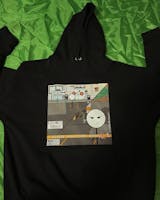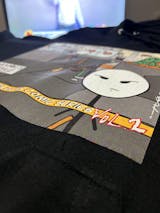In dtf transfer printing, applications are made on many fabrics. Since these applications have a wide area, it is inevitable to deal with some problems in various printing application areas. The techniques used in dtf printing are effective on the development and progress of printing. Printing techniques used specifically for various surfaces cause errors if they are not applied correctly. For example, the printing quality will be low on a fabric type that is not suitable for printing. If the printing quality is low, deterioration and cracking will occur in the fabric color and printing. In order to prevent this situation, attention should be paid to the methods and material selection used in printing.
Among the problems experienced in printing, the printing machine failure problem completely stops the operation of the prints. Regular maintenance of the technological products used for an efficient printing process is required. It is important to minimize the failure problem by pre-printing test stages and checking the machines. Proper coloring and sizing are required in order not to decrease the quality of the prints. No one likes a print product that looks different in size and out of shape and does not offer it for sale. A print product crowned with aesthetic appearance and regular prints appeals to every company and every buyer. For this reason, it is essential to make plans to eliminate complex color and size problems while printing.
Solutions to Technical Failures in Printing
The source of technical problems that occur during dtf printing is dtf printers and technological machines. Especially in designs prepared in a digital environment, a technical problem in the devices means that the printing is incomplete and stops. These problems are a waste of time for customers and a serious problem for the manufacturer. In order to get an efficient result from printing, spare machines must be ready so that the products to be printed can be prepared digitally. Solutions must be found for power and energy outages and the maintenance of the machines must be done at regular intervals.
Things to Consider for Successful Dtf Designs
In order for dtf printing to progress in smooth stages and be realized successfully, it is necessary to pay attention to some elements. In order for the prints to be of high quality, the fabrics must be carefully selected, and special heat transfer must be provided for each different fabric type. In order to design high quality and non-deteriorating prints, it is necessary to choose high quality and water-based inks when choosing inks. At the same time, the printing films used in the transfer of the print must also be of high quality. In my dtf printing designs, a perfect design is prepared by receiving support for special and personal designs. The appropriate and correct sizing of the prints should be checked and separated. At the end of a correct printing process, flawless and error-free prints are obtained and packaged to be delivered to the buyers.
It is a time-consuming option for manufacturers that design prints consist of various details specifically. During this process, the preparation of special details and shapes by designers supports the manufacturer. Both a professional work is created and the manufacturer accelerates the printing efficiency. Flawless and special prints, which are made by the correct application of different printing techniques, are checked at every stage and delivered to the businesses without any errors. While the stages of perfect designs are being checked, originality details are added thanks to special labels. In this way, both the manufacturer and the businesses benefit from the benefits of problem-free design prints.








